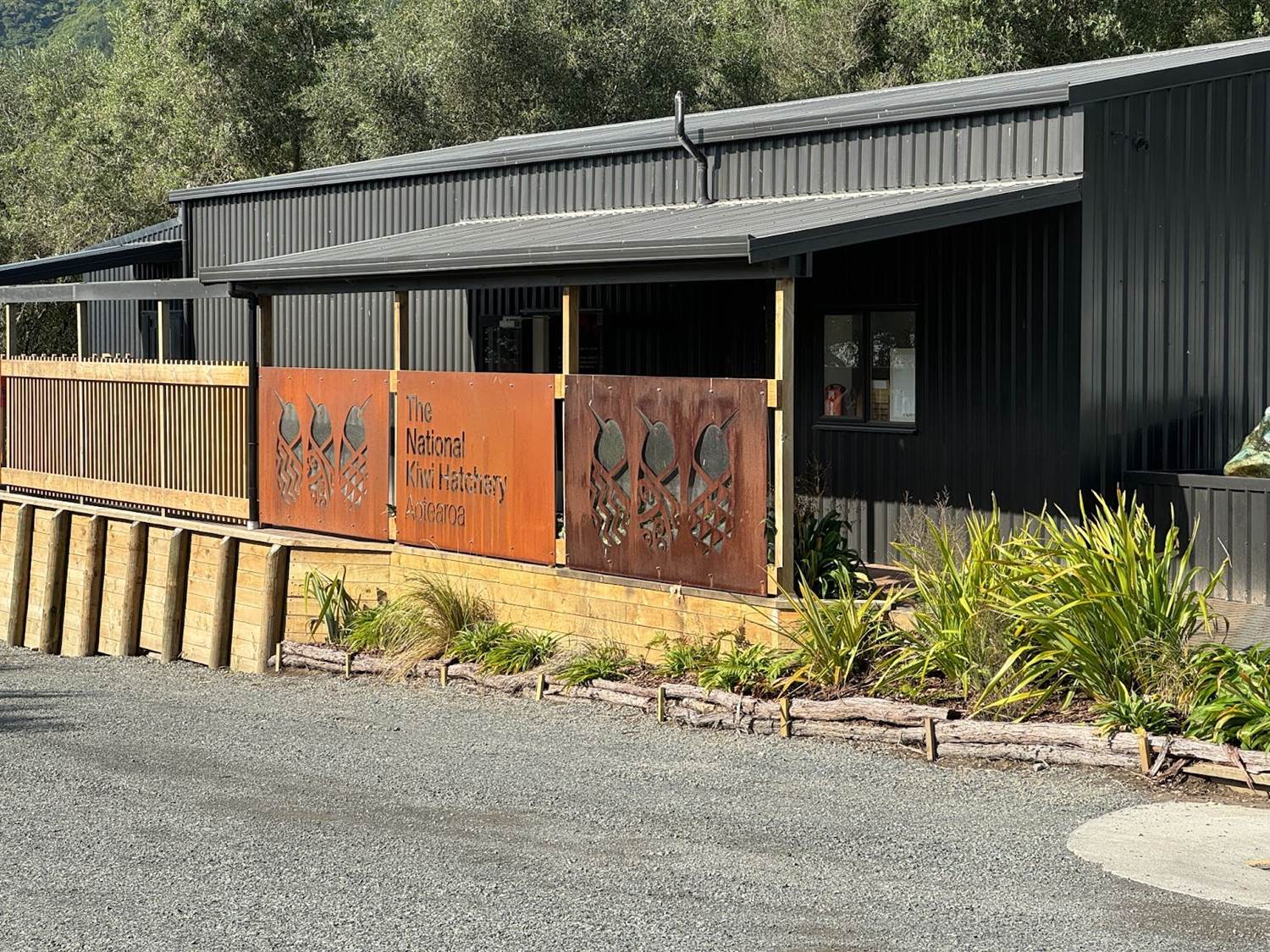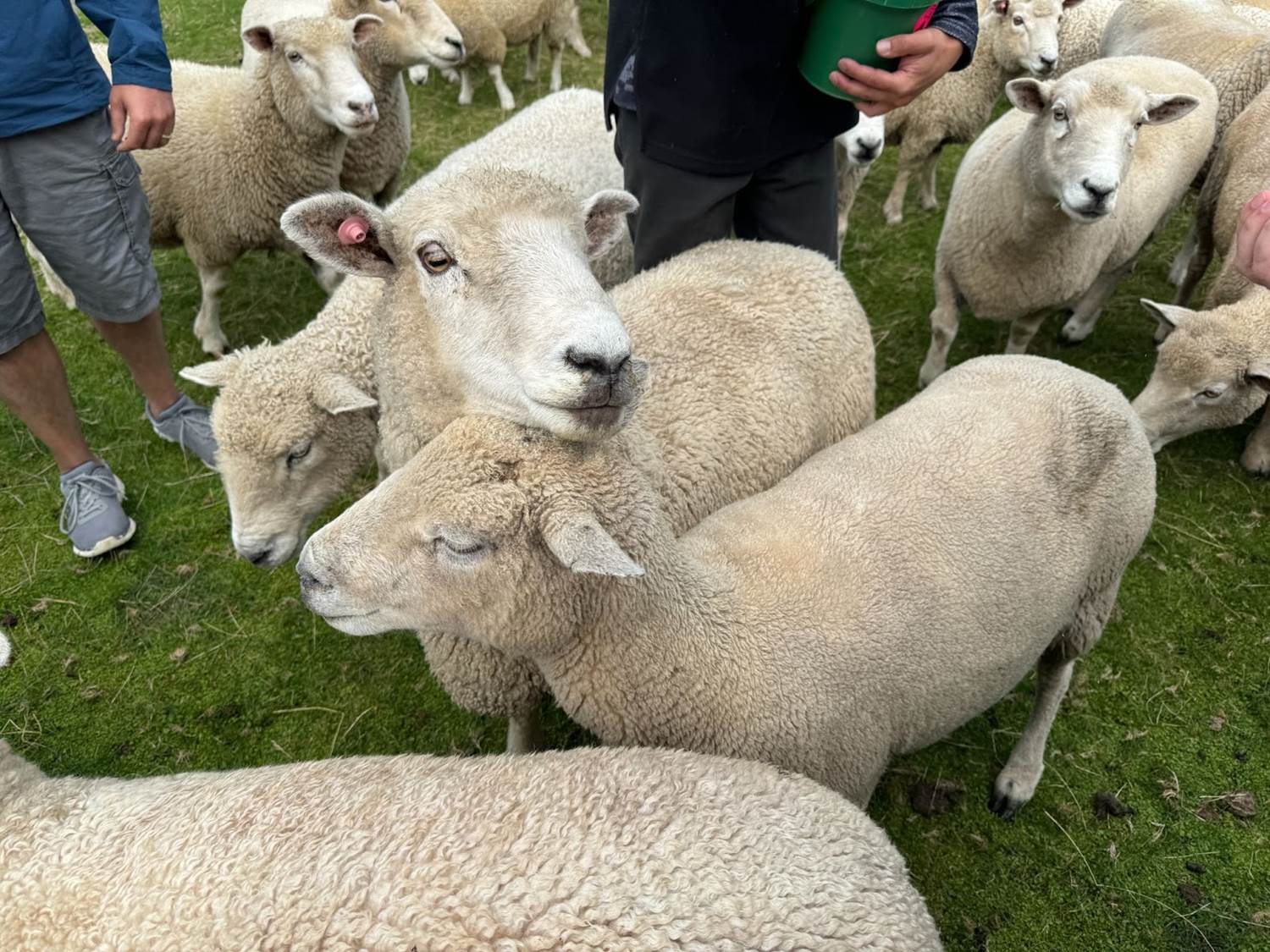Trip Report: Adventures by Disney New Zealand Day 5 – Kiwi Hatchery, Sheep Sheering, Zip Lining, Luging, and More
If you’re from New Zealand, you’re a kiwi. That’s how synonymous the island nation is with its mascot bird. And so, on the fifth day of the Adventures by Disney New Zealand itinerary, we continued our exploration of Rotorua with a visit to the National Kiwi Bird Hatchery.
New Zealand was once a bird’s paradise, and many of the native species here evolved to living life exclusively on land. Kiwis aren’t as big as their flightless cousins like ostriches and emus, but just like those flightless birds, they create their homes on the ground, which is where they lay their eggs. And so, when settlers arrived and brought with them new predators like stoats and opossums, kiwi eggs and chicks became a favorite meal and their numbers have declined to the brink of extinction.
Our guided tour of the hatchery began with some taxidermied displays of the type of kiwi being preserved here - the Brown Kiwi. Display cases housed taxidermied examples of chicks at various stages in their life, plus an adult male and female.
Photos aren’t allowed inside the hatchery, and for good reason. Kiwis are nocturnal and bright lights are bad for their eyes. The risk to these baby chicks’ fragile vision is too risky to chance a flash accidentally going off. But it was amazing to see how the center is committed to raising these chics in a way that ensures they don’t imprint on humans. When they’re big enough to not be on the menu of their top predator, they’re released into the wild.
A lot of work and care goes into “Operation Nest Egg," including tracking males released into the wild so that they can make the next generation of eggs easier to find and protect (males are the ones who stay with the egg until it hatches). The visit inspired Adventurers to want to help the cause, and one of the easiest ways was by making a purchase at the gift shop.
Before we boarded our bus, our tour guide from the hatchery ran out with a box to share that he had a kiwi we could meet. Opening the box, it ended up being the plush kiwi (named Kenai) that our Adventure Guides have used several times to distribute our pin of the day. It features Snow White with a friendly kiwi on her hand and features the title of the day’s adventure, “Save the Kiwis."
Next on the itinerary was the Agrodome Farm Tour (the National Kiwi Bird Hatchery is conveniently located within the Agrodome). This tram tour of the farm included several stops, starting with the ability to pet and feed the main type of sheep raised here - Romney sheep.
Our tour guide then gave us a demonstration of sheep sheering. Romney sheep wool is primarily used to make carpet and rugs, and sheering sheep helps them not only keep cool, but also prevents their wool from becoming a breeding ground for bugs. As a pawrent to two dogs who get groomed monthly, it was funny to see the similarities between this sheep’s reluctance to be groomed and that of my own fur babies. Before…
… and after.
Before the tour was done, we stopped at another area of the farm to feed different types of sheep and alpaca.
It was then time to feed the humans (ourselves) with a buffet lunch at Bowen House, a historic house on the farm.
After lunch, we were split into smaller groups. The main activity was the Rotorua Canopy Tour, a ziplining experience through Rotorua’s 1,000-year-old forest canopy. The tour included six lines through the forest, with an educational nature walk in between. My favorite of the lines was the third, which was so long and through such a dense area that you couldn’t see the other end when you left the platform.
That line was also a great segue into the conservation part of the experience, since you step off a tree that is thousands of years old. It’s seed likely passed through an extinct species, the moa (see the Day 4 recap for more on these animals). An artist display of the birds that once called this forest home was on display.
All is not lost. The zip line experience benefits the Canopy Conservation Trust, which has been working to remove harmful pests to birds including stoats, rats, and opossums. The program has come a long way since it launched in 2012, and it fits alongside New Zealand’s goal of being predator-free for its native bird species by 2050. A perfect example were three Toutouwai birds who would eat small worms out of our hands (a limit of 3 per bird to prevent them from becoming solely reliant on handouts).
An alternate activity that some members of our group enjoyed was the Interpretive Forest Walk through the same area as the zipline experience, which also included the same conservation information.
Rotorua is the birthplace of Zorbing (rolling down hill in water bubbles) and our Adventure Guides could make arrangements for Guests to try this on their own during the short break in activities. We opted for some time to rest at the hotel before our evening activities at Skyline Rotorua. This experience started with a short gondola ride up to the entertainment venue.
Dinner was the only advertised experience we would do, but our Adventure Guides surprised us with an optional activity - Luging. The courses here are incredible and from the same starting line, you can choose multiple paths to the bottom. When the adventure was complete, a skilift was there to take drivers and their sled back up to the starting point.
Dinner was an international buffet called the StratosFare, which offered something for everyone. But the real star of the show was the view of Rotorua, including Mokoia Island in the center of the lake from the tale of Hinemoa and Tūtānekai. It was the perfect place to see the sunset over a delicious meal and great company.
Tomorrow will conclude not only our time in Rotorua, but the North Island of New Zealand as we take a flight to our next destination. Check back each day to follow along on our Adventures by Disney trip to New Zealand.




















